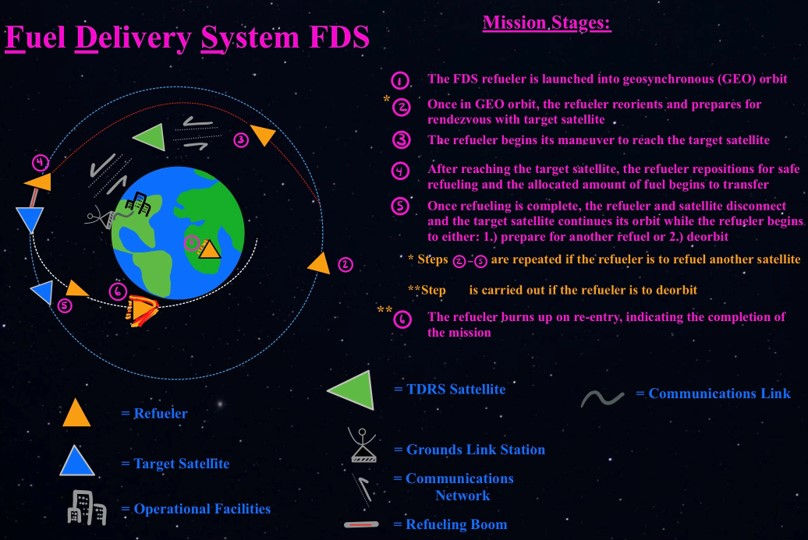Refueling Satellite Capstone Design
- Allison K
- Nov 7, 2021
- 2 min read
Updated: Sep 4, 2022
As part of the aerospace engineering major at Penn State, it is required to participate in a capstone project senior year after completing a year of aerospace courses. One of the options for this capstone involves a spacecraft of some sort to successfully complete a mission. It also involves determining what the ethical responsibilities are to the group, to employers, and to society. The first semester involves a preliminary design for the spaceship.
After December 2021, I graduated and did not continue this project. Here is what I worked on for it during my time there:
My group chose the task of refueling satellites in Geosynchronous orbit. Satellites cost hundreds of millions of dollars to design, build and launch with a current lifetime of only 15 years. The goal of this project is to design a spacecraft to refuel these satellites in a way that does not harm itself, the satellite, or any part of human life. By doing this, it will cut down on space debris since the satellites can continue to be in use and our spacecraft will deorbit when finished.

Figure 1. Drawing of a satellite in GEO orbit about to be refueled, drawn by me

Figure 2. Mission Architecture to Refuel Satellites

Figure 3. End-to-End Communications Diagram for Mission
Table 1 demonstrates the estimated mission timeline:
Table 1. Timeline for Mission Operations

A functional architecture flow charge was created to visually see the different stages that the spacecraft has to endure (Figure 4).

Figure 4. Functional Architecture for the Fuel Delivery System
The different sections were then broken up into Functional Flow Block Diagrams to illustrate how the subsections connect to one another. For instance, after stage 4.1, the spacecraft will either need to go back to 2.3 and repeat the process for refueling another satellite, or it will continue to 4.2 where it will perform a controlled deorbit.
Multiple trade studies were then conducted by the team including the fuel type, potential customers, attitude control, TDRS, power, and launch vehicle. These were conducted individually by each member with my focus on the potential customers that would need their satellites refueled. Table 2 illustrates the results found from the trade study I conducted:
Table 2. Potential Customer Information

From the table, it is concluded that the primary fuel our spacecraft will use to refuel is liquid hydrazine. Furthermore, it was concluded that it will be cost efficient to refuel these satellites instead of sending up an entire new satellite to be expired in 15 years again. Also, the team will be keeping watch on Orbit Fab who is conducting a very similar mission to launch within the next few years. The data collected above will also help the team narrow down how many satellites our spacecraft can refuel in one mission.




Comments